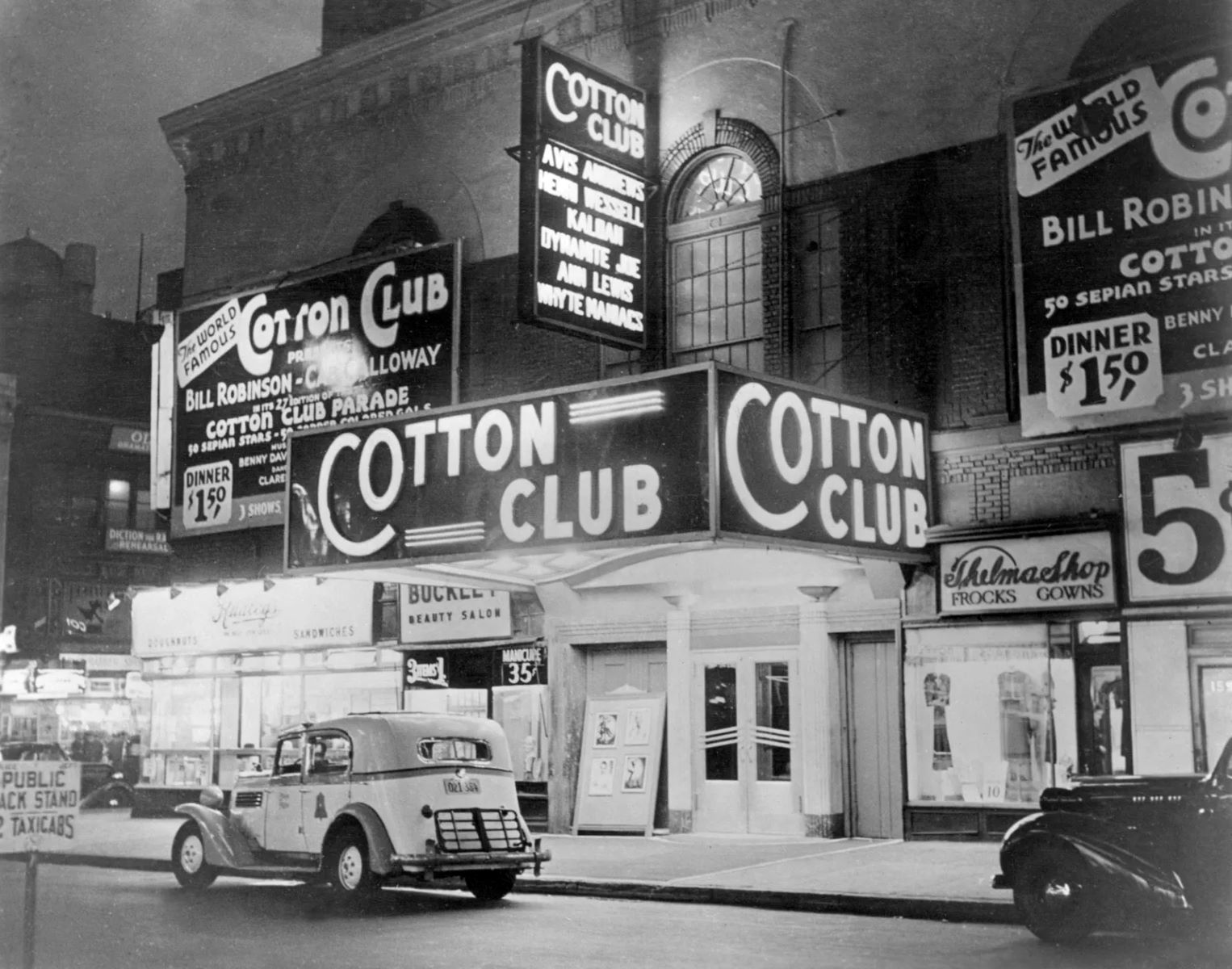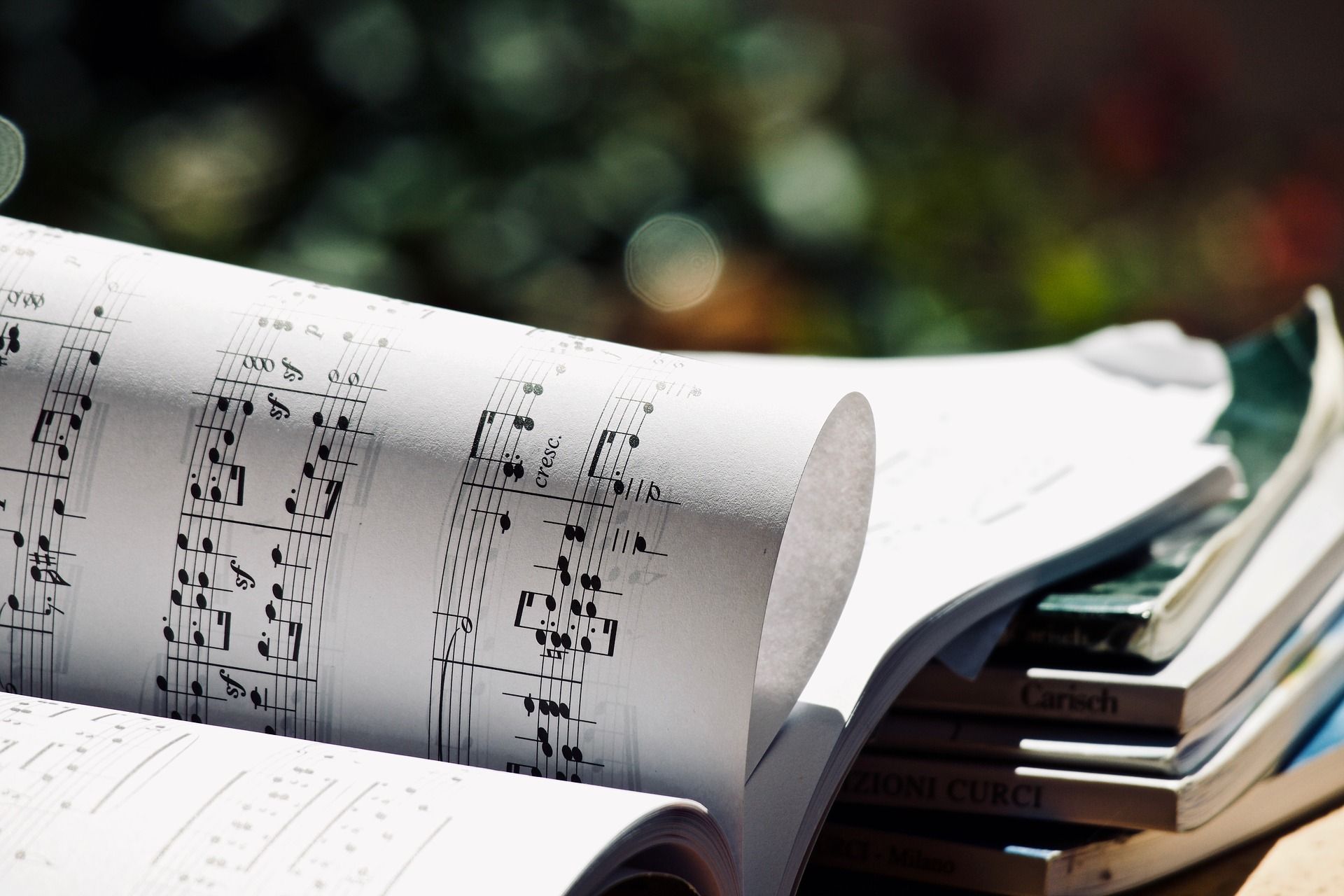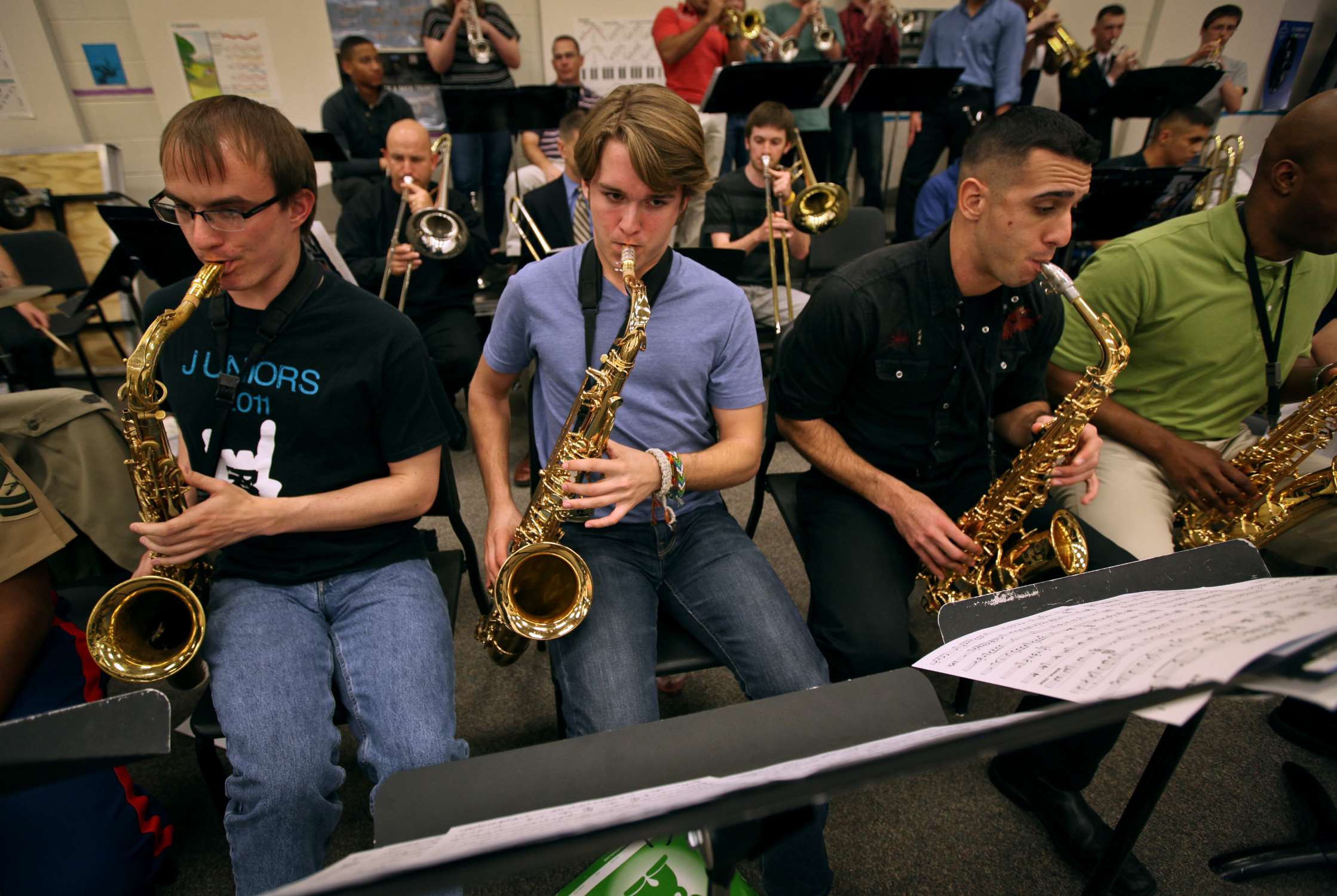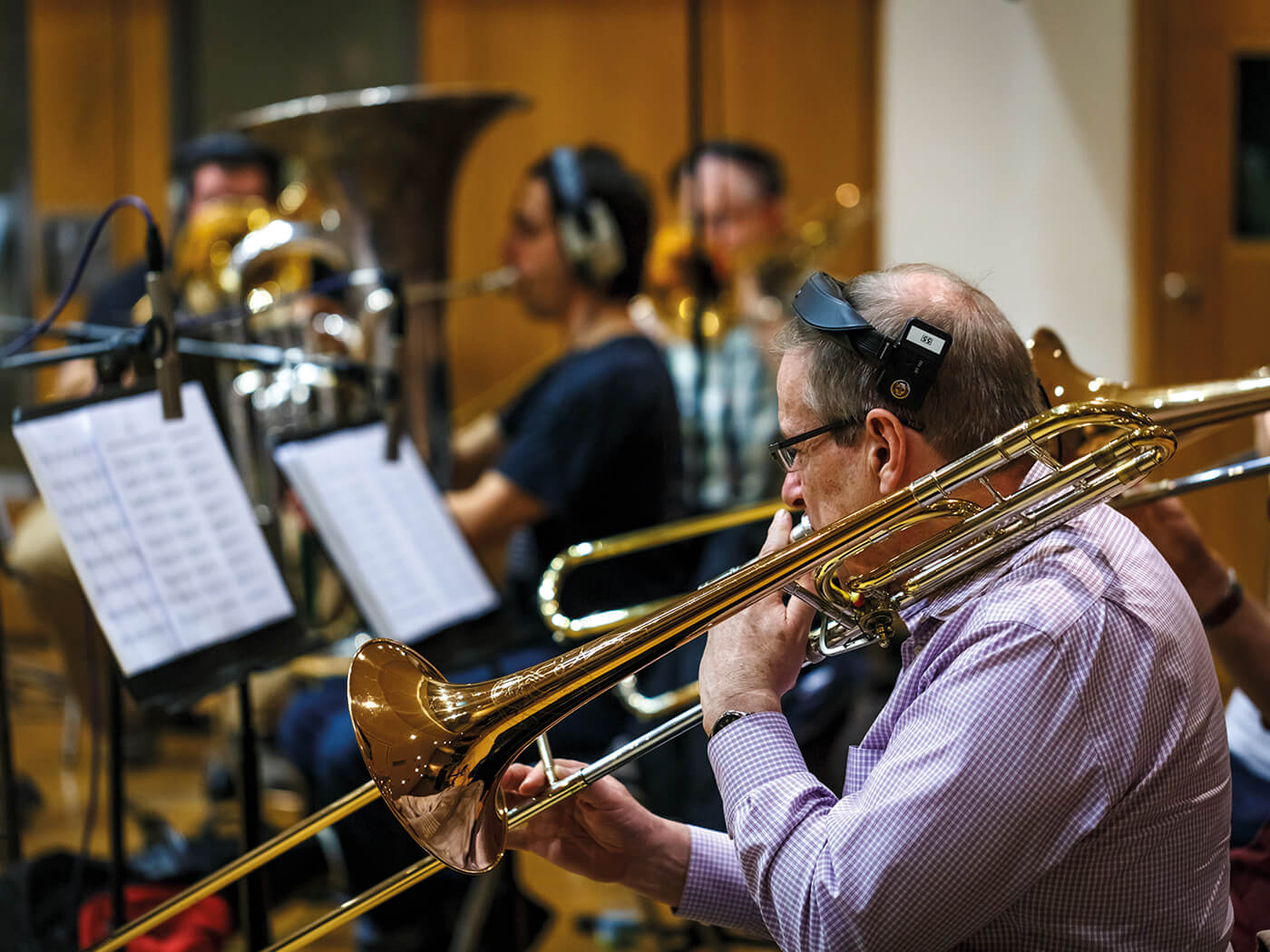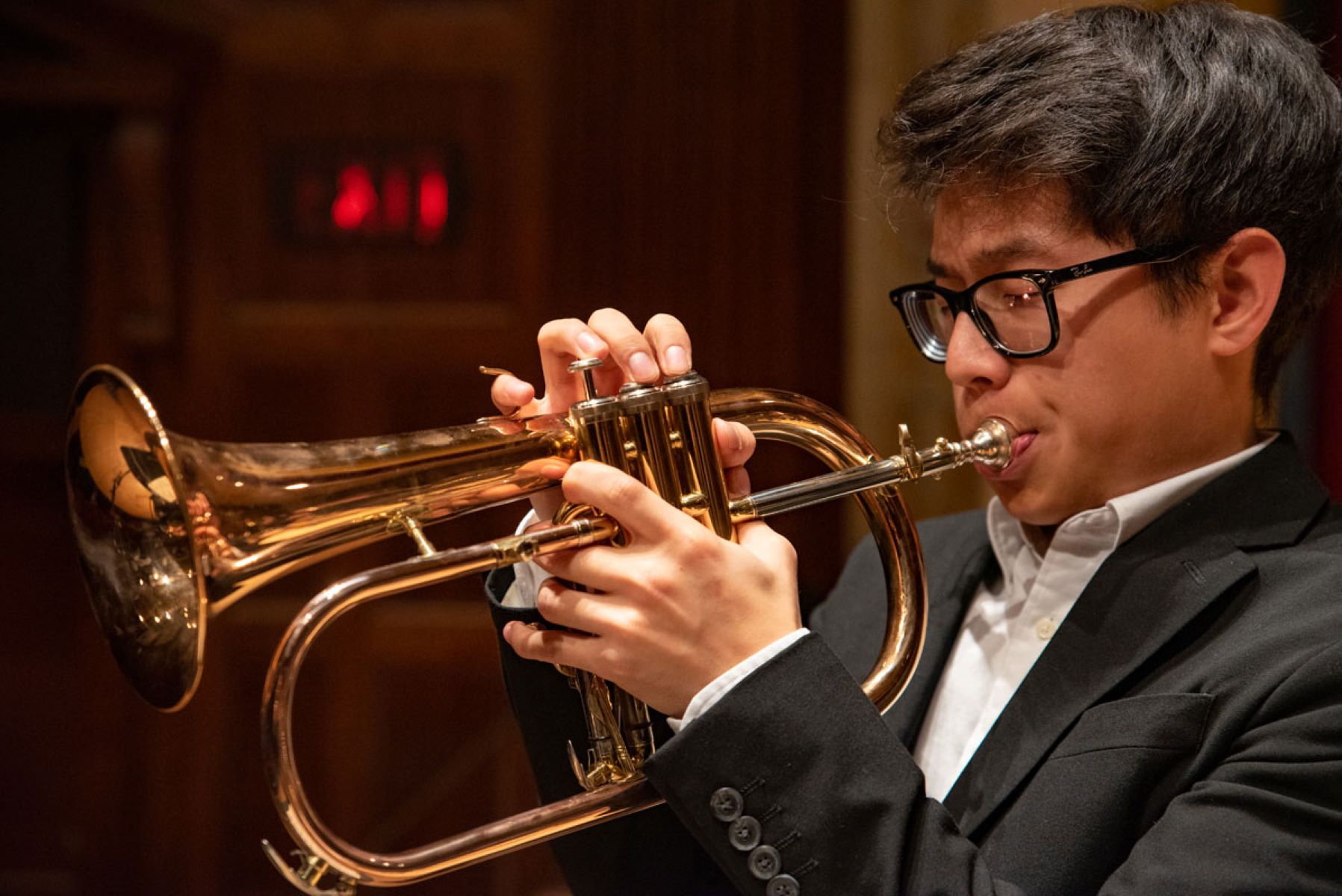Home>Genres>Jazz>What City Played A Key Role In The Development Of Jazz?
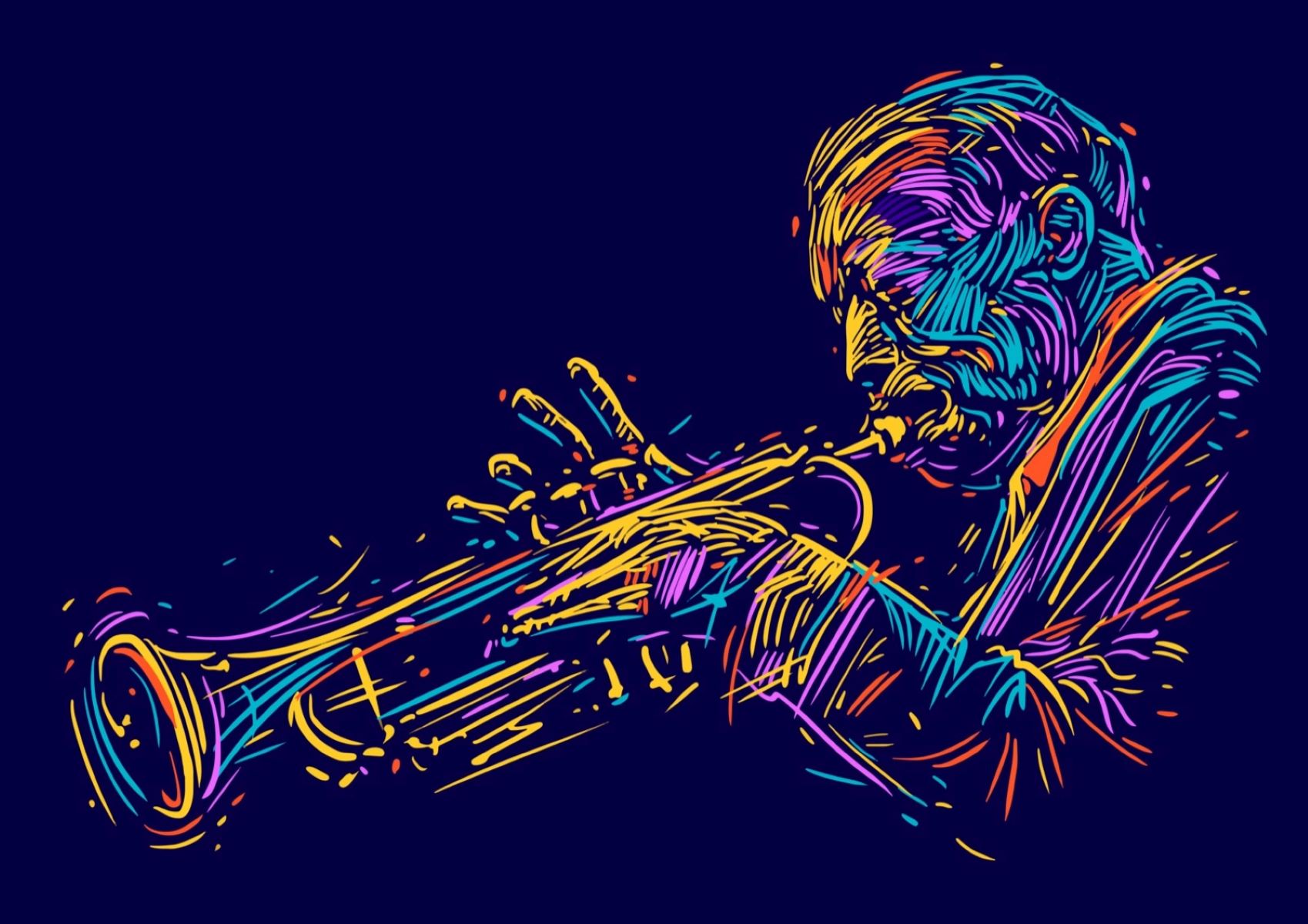

Jazz
What City Played A Key Role In The Development Of Jazz?
Modified: January 22, 2024
Discover the city that shaped the history of Jazz. Uncover the rich musical heritage and influential figures who contributed to the development of Jazz.
(Many of the links in this article redirect to a specific reviewed product. Your purchase of these products through affiliate links helps to generate commission for AudioLover.com, at no extra cost. Learn more)
Table of Contents
Introduction
Jazz, with its vibrant rhythms, improvisation, and soulful melodies, is a genre of music that has captivated audiences around the world for over a century. From smoky speakeasies to grand concert halls, Jazz has provided a soundtrack to both the jubilant and tumultuous times in history.
While undeniably American in origin, jazz draws from diverse musical traditions, including African rhythms, European harmonies, and Caribbean influences. It is a genre that reflects the rich tapestry of cultural heritage that defines the United States.
But when we talk about the birthplace of jazz, one city stands out above the rest – New Orleans.
Known as the “Cradle of Jazz,” New Orleans has a unique musical heritage that laid the foundation for the development of jazz. Its vibrant and multicultural atmosphere provided the perfect breeding ground for this revolutionary genre to emerge.
In this article, we will explore the early roots of jazz in New Orleans, the significance of the city in the birth of jazz, the influence of Storyville on the genre, notable jazz musicians who hail from the city, and the annual celebration of jazz heritage at the New Orleans Jazz Fest.
Join us as we take a journey through the streets of New Orleans, a city where jazz was born and continues to thrive.
Early Roots of Jazz in New Orleans
The roots of jazz can be traced back to the early 20th century in the culturally rich city of New Orleans. It was here that a melting pot of musical influences, including African, Caribbean, and European traditions, came together to create a new and exciting music genre.
One of the key factors contributing to the birth of jazz in New Orleans was the city’s unique cultural mix. The descendants of African slaves brought their musical traditions, such as syncopation and improvisation, which formed the rhythmic backbone of jazz. European and Caribbean immigrants also played a significant role, introducing elements like brass instruments, harmonies, and dance rhythms.
The development of jazz was also deeply intertwined with the social and cultural landscape of the city. New Orleans was a port city, bustling with trade and diverse communities. African-Americans, Creoles, and immigrants from all walks of life found themselves congregating in neighborhoods like Faubourg Tremé and Storyville, where music was an integral part of everyday life.
Within these vibrant communities, a distinctive musical style began to emerge. Musicians would gather in clubs, street corners, and parks to jam together, often drawing inspiration from funeral processions and parades. The musicians would experiment with improvisation, creating spontaneous solos that added a personal touch to the music. This spirit of collaboration and innovation became the cornerstone of jazz.
Some notable figures emerged during this early period of jazz. The self-proclaimed “inventor of jazz,” Buddy Bolden, was a cornet player known for his powerful and improvisational playing style. Jelly Roll Morton, a pianist and composer, was another prominent figure who refined the ragtime piano style and contributed to the development of jazz.
It is important to note that while New Orleans played a crucial role in the creation of jazz, the genre didn’t stay confined within the city’s borders for long. As musicians traveled and brought their music to other parts of the country, jazz began to spread its wings and evolve, ultimately becoming a global phenomenon.
Today, the early roots of jazz in New Orleans are celebrated and revered as the foundation of this remarkable musical genre. The city’s rich musical heritage continues to inspire musicians and captivate audiences, ensuring that the spirit of jazz lives on.
Significance of New Orleans in the Birth of Jazz
New Orleans holds a significant place in the birth of jazz as it provided the perfect breeding ground for this revolutionary genre to flourish. The city’s unique cultural mix, vibrant music scene, and social dynamics all played crucial roles in shaping the early development and spread of jazz.
One of the key factors contributing to New Orleans’ significance in the birth of jazz is its multicultural heritage. The city was a melting pot of African, European, and Caribbean influences, creating a rich and diverse musical landscape. African rhythmic traditions, European harmony, and instruments like the brass bands brought by European immigrants all combined to form the distinctive sound of early jazz.
Furthermore, New Orleans’ social and cultural dynamics also played a vital role in the birth of jazz. The city’s neighborhoods, like Faubourg Tremé and Storyville, became hotbeds for musical innovation and collaboration. These communities, comprising African-Americans, Creoles, and immigrants, created a dynamic cultural exchange that inspired musicians to experiment and create new sounds.
Within these neighborhoods, music was an integral part of everyday life. Musicians would gather in clubs, street corners, and even in front of houses to play and improvise together. This vibrant music scene led to the development of a unique musical style characterized by syncopation, improvisation, and lively rhythms.
Moreover, New Orleans’ geographical location as a major port city further contributed to its significance in the birth of jazz. The city’s bustling commerce and diverse population allowed for cross-cultural exchanges and the exposure of jazz to a wide range of audiences. As ships came and went, jazz music traveled beyond New Orleans, finding its way to cities across America and eventually to the rest of the world.
It is also worth mentioning the venue known as Storyville, which operated as a legal red-light district from 1897 to 1917. Although controversial, Storyville provided a platform for jazz musicians to perform and hone their craft. It became an incubator for the emerging genre, allowing musicians to experiment and develop their unique styles in a vibrant and supportive environment.
The significance of New Orleans in the birth of jazz cannot be overstated. The city’s cultural diversity, social dynamics, and vibrant music scene created an environment that nurtured the growth of this groundbreaking genre. Jazz, with its fusion of musical traditions and spirit of improvisation, continues to be celebrated as a defining characteristic of New Orleans and a musical legacy that reverberates around the world.
The Influence of Storyville on Jazz
One of the most fascinating chapters in the history of jazz is the influence of Storyville, a legal red-light district in New Orleans that operated from 1897 to 1917. Despite its controversial nature, Storyville played a pivotal role in shaping the evolution and spread of jazz.
Located just outside the French Quarter, Storyville provided a space where musicians could perform and entertain patrons from all walks of life. The district was home to numerous bordellos, saloons, and dance halls, creating a vibrant atmosphere where music thrived.
Many talented jazz musicians got their start playing in the establishments of Storyville. These musicians would often perform in small ensembles, showcasing their skills in front of eclectic audiences. It was in these venues that new musical ideas and styles were born, as the musicians were free to experiment with their sounds.
Storyville also served as a melting pot for musical influences. Different genres, such as ragtime, blues, and African rhythms, intermingled and fused together to create a unique musical language that would later be identified as jazz.
One notable aspect of Storyville’s influence on jazz is its impact on the improvisational nature of the genre. Musicians would often engage in “cutting contests,” competing to outshine each other with their improvisational skills. This competitive spirit led to the development of individualistic styles and pushed the boundaries of musical expression.
In addition to fostering musical innovation, Storyville provided essential opportunities for African-American musicians to showcase their talent and gain recognition. Before the district’s establishment, racial segregation was deeply entrenched, limiting the opportunities for Black musicians to perform in mainstream venues. However, within the boundaries of Storyville, talented Black musicians were able to gain exposure and build their careers.
While Storyville’s existence was marred by controversy and ultimately came to an end due to a crackdown on prostitution and vice, its influence on jazz was profound and far-reaching. Musicians who honed their skills in the brothels and bars of Storyville went on to become pioneering figures in the world of jazz and helped popularize the genre beyond the borders of New Orleans.
The legacy of Storyville can still be felt today. Its impact on jazz’s improvisational nature, the fusion of musical styles, and the opportunities it provided for Black musicians to gain recognition have all shaped the direction and development of jazz as we know it.
While the physical remnants of Storyville may no longer exist, its influence on jazz is forever ingrained in the history of the genre, serving as a testament to the resilient spirit of the music and the musicians who brought it to life.
Notable Jazz Musicians from New Orleans
New Orleans has been a hotbed of musical talent, producing some of the most influential and groundbreaking jazz musicians in history. These individuals, with their distinctive styles and innovative approaches, have helped shape the genre and establish New Orleans as a mecca for jazz. Here are just a few notable jazz musicians who hail from the city:
1. Louis Armstrong: Known as the “Father of Jazz,” Louis Armstrong is perhaps the most iconic figure in the history of jazz. His soulful trumpet playing, unique vocal style, and improvisational prowess revolutionized the genre. Armstrong’s contributions to jazz, spanning from the early days of New Orleans’ music scene to his later years as a global ambassador of the genre, cannot be overstated.
2. Jelly Roll Morton: A pioneer of jazz piano, Jelly Roll Morton was a composer, bandleader, and virtuoso pianist. He was one of the first musicians to notate jazz compositions and bring a sense of formality to the genre. Morton’s innovative use of syncopation and his mastery of the “Spanish tinge” added a distinctive flavor to his music.
3. Sidney Bechet: Sidney Bechet was a renowned clarinetist and soprano saxophone player who left an indelible mark on jazz. His passionate and emotive style, influenced by his Creole heritage and the blues, made him a distinct voice in the genre. Bechet’s compositions and improvisations showcased his virtuosity and contributed to the development of jazz as a soloist’s art form.
4. Wynton Marsalis: A modern-day jazz legend, Wynton Marsalis is a trumpeter, composer, and bandleader who has actively promoted and preserved jazz’s legacy. As the artistic director of Jazz at Lincoln Center, Marsalis has brought his unique blend of traditional and contemporary jazz to audiences worldwide. He is a prolific composer and performer whose contributions have earned him numerous accolades, including multiple Grammy Awards.
5. Preservation Hall Jazz Band: Founded in 1961, the Preservation Hall Jazz Band is both a New Orleans institution and a global ambassador for traditional jazz. The band, comprised of a rotating roster of talented musicians, has dedicated itself to preserving and promoting the early jazz sound. Through their spirited performances and commitment to authenticity, they have kept the spirit of New Orleans jazz alive for new generations.
These are just a few examples of the countless jazz musicians who have emerged from the vibrant musical landscape of New Orleans. Each musician brings their unique style and contributions, adding to the rich tapestry of jazz history. Their music continues to inspire and captivate audiences, ensuring that the legacy of New Orleans jazz lives on.
New Orleans Jazz Fest: Celebrating Jazz Heritage
Every year, the city of New Orleans pays homage to its rich jazz heritage through a vibrant and exhilarating event known as the New Orleans Jazz Fest. This celebration, also known as the New Orleans Jazz & Heritage Festival, has become an iconic gathering for music lovers from around the world.
First held in 1970, the Jazz Fest showcases a diverse array of musical genres, with a particular emphasis on jazz, blues, and roots music. The festival takes place over two weekends and features performances from both renowned musicians and emerging talents, offering a unique blend of traditional and contemporary sounds.
At the heart of the Jazz Fest is its dedication to celebrating the cultural heritage of New Orleans. The festival not only showcases local talent but also pays tribute to the city’s musical pioneers and legends. From Louis Armstrong and Jelly Roll Morton to Mahalia Jackson and Allen Toussaint, the Jazz Fest brings the spirit and legacy of these iconic musicians to life.
While jazz remains a central focus of the festival, the New Orleans Jazz Fest has expanded to embrace a wide range of musical styles and genres. Attendees can experience the soulful sounds of the blues, the infectious rhythms of Caribbean and Latin music, the energy of brass bands, and much more. The festival offers something for everyone, ensuring that all visitors can find a musical experience that resonates with them.
But the Jazz Fest is not just about the music. It is also a celebration of New Orleans’ rich cultural heritage and culinary traditions. The festival showcases local food vendors, offering a variety of traditional New Orleans delicacies such as po’boys, gumbo, crawfish étouffée, and beignets. Attendees can savor the flavors while immersing themselves in the music, creating a truly sensory experience.
In addition to the music and food, the Jazz Fest also features a vibrant arts market, showcasing the work of local craftsmen and artists. Attendees can explore the colorful booths and discover unique pieces of art, jewelry, clothing, and crafts that reflect the spirit of New Orleans.
The New Orleans Jazz Fest serves as a testament to the enduring power and influence of jazz music. It brings people from all walks of life together, fostering a sense of community and celebration. The festival shines a spotlight on the city’s cultural heritage, allowing visitors to immerse themselves in the vibrant sounds, flavors, and traditions of New Orleans.
Whether you’re a jazz aficionado, a lover of cultural experiences, or simply someone seeking a joyous celebration, the New Orleans Jazz Fest offers an unforgettable journey into the heart and soul of jazz music and the city where it all began.
Conclusion
New Orleans holds a special place in the history of jazz, serving as the birthplace of this remarkable musical genre. From its early roots in the streets of New Orleans to its worldwide influence, jazz has become a symbol of cultural expression and artistic innovation.
The multicultural heritage of New Orleans, with its blend of African, European, and Caribbean influences, created a fertile ground for the development of jazz. The city’s unique musical traditions, vibrant music scene, and social dynamics all played critical roles in shaping the early evolution of jazz.
Through the streets of New Orleans, jazz emerged as a collaborative and improvisational art form. Musicians gathered together in clubs, street corners, and parks, creating spontaneous and soulful music that spoke to the heart and soul of the city. Jazz became a voice for the experiences and emotions of a diverse community, reflecting the spirit and resilience of New Orleans.
The influence of Storyville, the legal red-light district, cannot be overlooked. Although tumultuous, Storyville provided a platform for jazz musicians to experiment, collaborate, and refine their art. From its boundaries emerged innovative styles, improvisational techniques, and a spirit of competition that pushed jazz to new heights.
New Orleans is also home to a myriad of legendary jazz musicians who have left an indelible mark on the genre. From the influential Louis Armstrong and Jelly Roll Morton to the contemporary jazz genius of Wynton Marsalis, these musicians have not only shaped jazz but have also carried the legacy of New Orleans to the world stage.
To celebrate its rich musical heritage, New Orleans hosts the annual New Orleans Jazz Fest. This vibrant and diverse event brings together musicians, artists, and food vendors to showcase the city’s cultural and musical traditions. The festival serves as a testament to the enduring legacy of jazz and the city’s commitment to preserving its cultural heritage.
As we reflect on the significance of New Orleans in the birth and development of jazz, we are reminded of the transformative power of music. Jazz has transcended boundaries, bringing people of different backgrounds and cultures together. It continues to inspire generations of musicians and captivate audiences around the world.
New Orleans, with its vibrant rhythms, soulful melodies, and cultural richness, will forever be recognized as the cradle of jazz. Its contributions to this iconic genre are immeasurable, and the spirit of jazz lives on in the streets, clubs, and hearts of this remarkable city.

